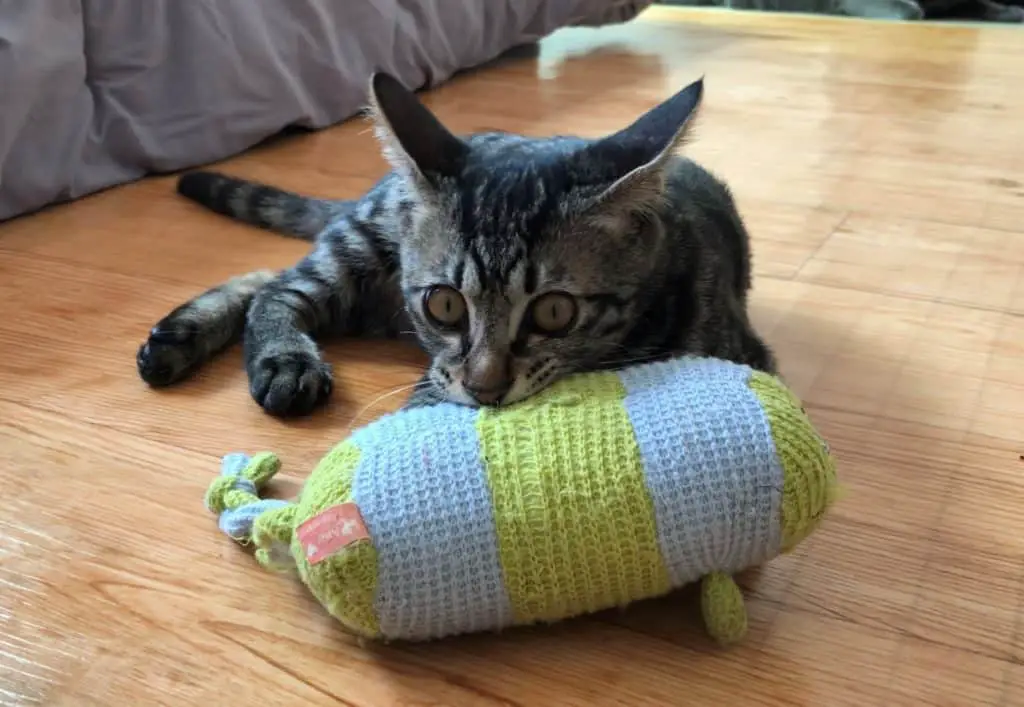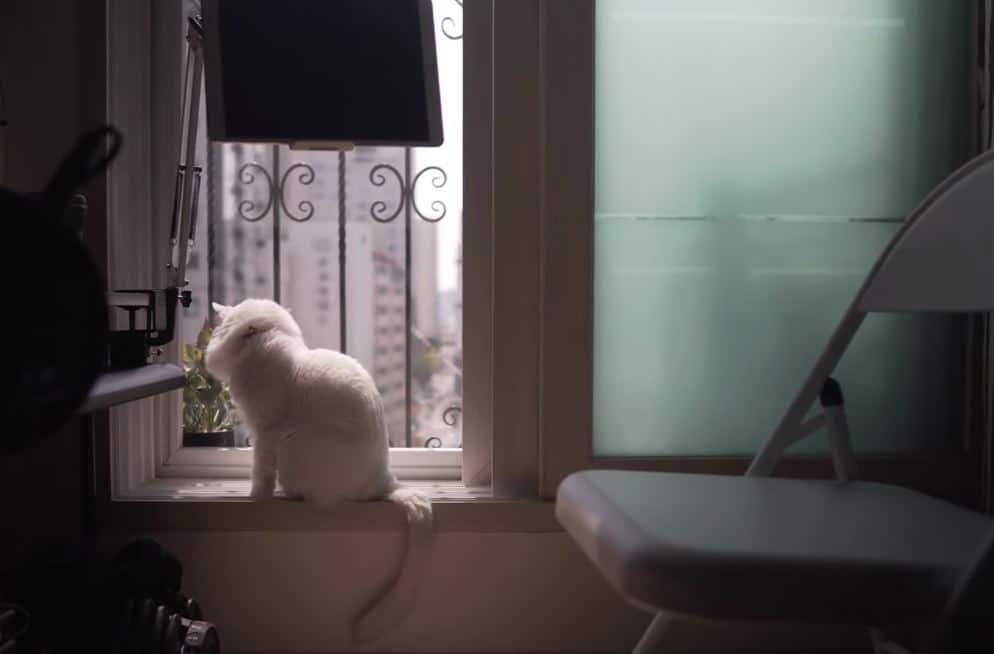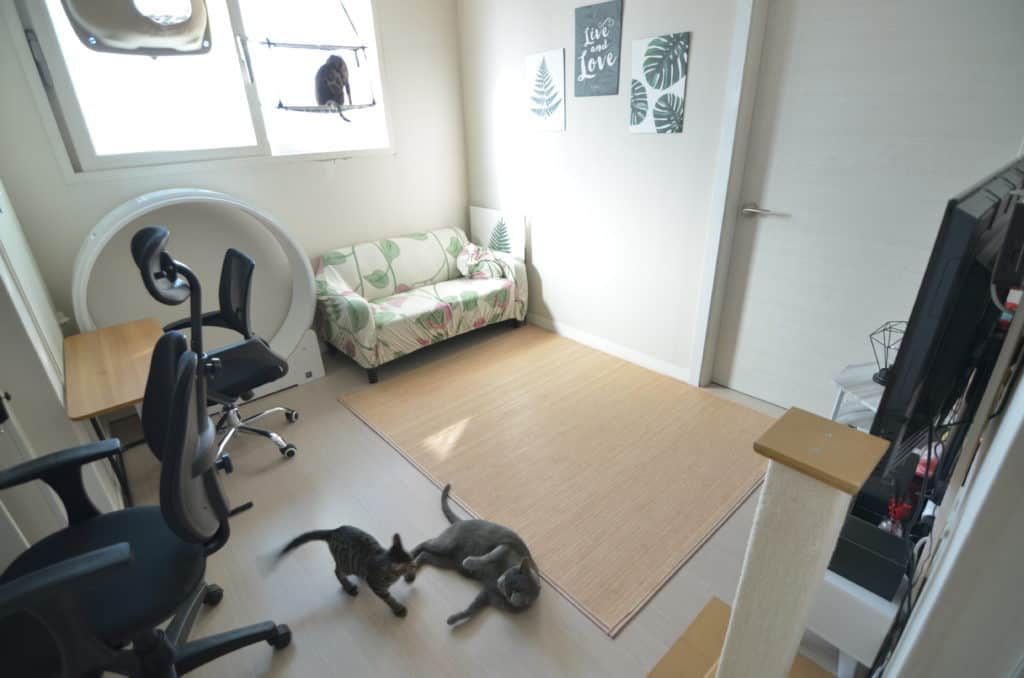If you’re thinking of adopting a new kitten or cat, you may be wondering whether it’s better to adopt one or two. It’s a common concern, but the answer isn’t straightforward.
There are plenty of benefits to adopting a pair of kittens or cats, but there many factors are to take in. Before deciding whether to adopt one or two kittens, it’s best to consider your lifestyle, the cat’s personality, and how well it has been socialized.

As cat ownership has increased over the recent years (especially as more people are working from home), there is also a growth in multi-cat households as popular information suggests that cats do better with a companion than alone.
For people looking for a quick answer to the question: is it okay to only adopt one kitten or cat? It depends on how well the cat or kitten was socialized. Generally, it’s better to adopt an adult cat if the owner is looking to only adopt only one cat. In comparison, kittens do better in pairs or multi-cat homes because end up with lower stress hormones when compared to adult cats (allowing them to better adapt to their environment and be better socialized), in addition to learning behavior inhibition.
In this article, we’ll go through some of the science that might support or not support this information so that prospective cat owners can make an informed decision that best fits their life and living situation.
Is It Cruel to Only Have One Cat or Kitten?
At the end of the day, every cat owner and cat is different. For the people wanting only to adopt one cat in their homes, having a well-developed cat (behaviorally and socially) is going to depend on the 3 factors largely:
- Time & attention devoted.
- Knowledge of cats and their behaviors.
- The cat’s personality and temperament.
It’s only cruel to have one cat or kitten if the owner is unwilling to understand the cat or try to improve its living conditions. Many people view cats as very low maintenance pets when a lot of the time, but as with any animal, they have their own way of living (and their own personal boundaries!), cats are just not as well understood as other pets.
People who have a lot of time to devote to their cats to improve their wellbeing and have as much information about their prospective cat will likely have the best experience with having only one cat.

Regarding the third point: the cat’s personality and temperament – a prospective owner, will only get the most accurate information with an adult cat. Why? They’re past their key development stages, and it’s easy to get a sense of how they’re going to act. Also, they have a history, either by the previous owners or caretakers themselves. Therefore, cat owners can be better prepared for an adult cat, especially in a single-cat household.
In comparison, a kitten will likely be unpredictable. Because of their huge amounts of energy, without proper base knowledge about cats and cat socialization, they can develop negative or unwanted habits. These can include:
- Biting, scratching, or generally overly territorial.
- Destructive habits such as destroying cables, stuff around the home, or valuables.
- Shy, skittish, afraid of strangers or other animals.
For the cat owners adamant about having one kitten, it’s best to obtain the kitten from reputable breeders or fosters even though it might be more difficult. This is because the kitten will likely grow up with other kittens and knowledgeable humans that can guide them in the right direction behaviorally.
What is Single-Kitten Syndrome?
Single-Kitten syndrome is a term that cat care-takers call a kitten that hasn’t been socialized properly. Exhibiting unwanted behaviors that would have been inhibited or curbed through play with other kittens or cats.
The most common problem being play aggression. Without a companion or friend, there’s no feedback for them to know if what they’re doing is too much. Therefore, as they grow up, they can become even too much for their owners since the aggressive actions when they were kittens are no longer cute nips but rather quite nasty bites.
When kittens play with each other, they’re always communicating on what is fun, what hurts, or what feels good.
As much as humans want to replicate this type of play and training, it’s impossible to achieve 100%. Kittens benefit the most from other kittens.
Therefore, the best way to avoid single-kitten syndrome is to provide another kitten friend, or if you cannot, again, choose a cat breed that is quite mellow (see in the below sections for Breed recommendations). Ensure that the kitten has grown up with their littermates and ask about their personalities!
Loki, my domestic shorthair cat, had a bad case of Single-Kitten syndrome when he was young. He was found alone by a local vet, and when I saw him, he had 2 bad behavioral problems: he got super stimulated by any touch, and he was a bad biter.

Although most of the cats at home at that time are adult cats, I did have an energetic Bengal cat that loved to play. Although not quite as good as another kitten for Loki to play with, another energetic cat would do him wonders, plus some guidance from a human wouldn’t hurt (for 3 effective strategies that I used for all of my cats to stop biting, click here!)
A month later, he stopped biting substantially. However, in the first couple of days, even my Bengal cat had problems. Loki was biting too hard and causing Latte (my Bengal cat) to hiss. However, the more that Latte hissed – the more he would understand that he was biting too hard. So my Bengal cat was a big player in the socialization of Loki. The other cats were just avoiding him like the plague for the first week.

What Cat Breeds Are Good in Single-Cat Homes?
In general, the cat breeds that are flexible enough to live in a single-cat home are naturally lower energy levels. They’re cats that are more docile, passive, and tolerant. Coincidentally, these breeds are the best breeds to live in apartments as well, since many prospective cat owners in apartments want their cats to be relatively chilled and respectful of their surroundings.
These breeds are:
- Ragdoll
- Exotic Shorthair
- Maine Coon
- Persian
- British Shorthair
For the full list and a comprehensive rating of each cat breed in terms of their energy level, how loud they are, and how well they fare in multi-cat or single-cat households, click here: Most Popular Apartment Cat Breeds: Everything You Need to Know.

Are Cats Happier in Pairs/Multi-Cat Homes?
In science, happiness is hard to measure. Therefore, sometimes researchers have to find other methods to measure and do quantitative tests. Usually, measuring the number of stress hormones is a much easier and decent way of determining the wellbeing of animals.
In a 2013 study: Are cats (Felis catus) from multi-cat households more stressed? Evidence from assessment of fecal glucocorticoid metabolite analysis. Fecal glucocorticoid metabolite (GCM) is an analysis that provides a non-invasive method for studying stressors in animals.
The study’s primary goal was to compare the general arousal/stress levels in cats in single-cat homes and multi-cat homes by assessing and analyzing the GCM of the cats.

Here are the highlights of the study:
- In young cats and kittens, when living in a multi-cat house had significantly lower GCM levels compared to adult cats. This seems to support the popular opinion that kittens outright do better with other cats. As expected, they were much more well-rounded cats as their behavior was corrected through their experience with other kittens/cats.
- Single-housed cats may be more susceptible to higher GCM concentrations if they were reported to “tolerate” petting (as opposed to “enjoying” or “disliking”). This indicates that there might be a lack of understanding with the cat and their owners.
- GCM did not vary much as a function of living style in adult cats (single, pair, or multi-cat housing). Highly stressed individuals were equally likely in the three groups.
- Other environmental aspects within the cat’s homes may play a more important role in day to day feline behaviors.
This is one of many studies that support the idea that kittens do much better with other kittens/cats than being alone. However, the study also points out that it can depend a lot on their socialization levels, environment, relationship with other cats, and their relationship with their owners for adult cats.
So what’s the answer to: are cats happier in pairs? It depends. For kittens, definitely yes. Not only is it a great learning experience for kittens to interact with other kittens, but they become many well-rounded cats that are much more adaptable in their environment. For adult cats, it’s a more complicated answer as it revolves around a complete picture of their lifestyle and environment. However, adult cats with good relationships with other cats in the home and their owners are very likely to be well-socialized and mentally healthy.
When Should You Adopt Another Cat?
Cat owners should start considering adding another cat when their cat starts exhibiting behaviors that fall in line with Single-Kitten Syndrome (poorly socialized cat). Here are the warning signs:
- They don’t know when to stop or limit themselves
- Can exhibit boredom or destructive actions and as a result, might develop into more separation anxiety behaviors. For a full article about how to spot separation anxiety and ways to resolve it (to reclaim your beauty sleep), click here!
- They start to ankle bite/nip at everything moving.
- Too vocal and constantly meowing/wanting attention. If you’re having trouble with this, read my full article on this topic that goes through effective tips to curb this habit!
- Constant energy that it becomes difficult to keep up with them (click here for solutions for that too!)
If your kitten or cat starts exhibiting any of the above behaviors, it’s time to start thinking about adding another cat to your home. For cat introductions without separation, I got that covered too: Illustrated Guide: New Cat Introduction No Isolation or Separation!
Recommended Tools
These tools/toys will help bring out the cat’s natural behaviors. They’re more important to single household cats as they will need the most attention and playtime. For the full curated list of cat supplies, visit my recommended cat supplies page, where it contains everything from cat toys, litterbox products to cat shedding management!
-
 Check Price!
Check Price!While it takes up some horizontal space on the floor - this is such a great tool to let your cats hide and burrow and be cats. Multi-cat households love this item because of its durability and effectiveness. Also folds up neatly to be put away and organized!
We earn a commission if you click this link and make a purchase at no additional cost to you.
-
 Check Price (US) Check Price (CA)
Check Price (US) Check Price (CA)When your cats need to expend some extra energy and you don't exactly have the time to play with them directly - create a play situation so that they can play with each other. This is great for multi-cat homes and folds up neatly when it's not being used. Lots of different designs to fit your home aesthetics too!
We earn a commission if you click this link and make a purchase at no additional cost to you.
